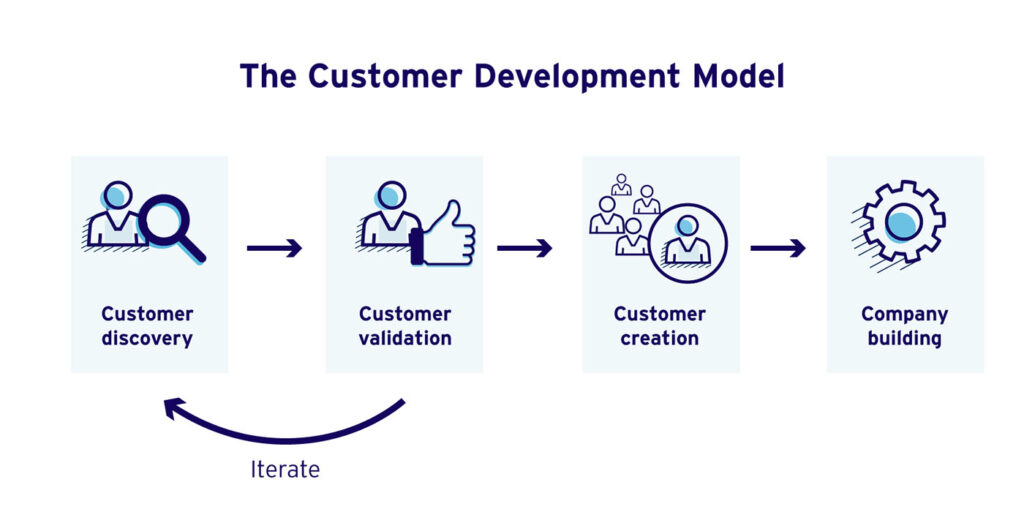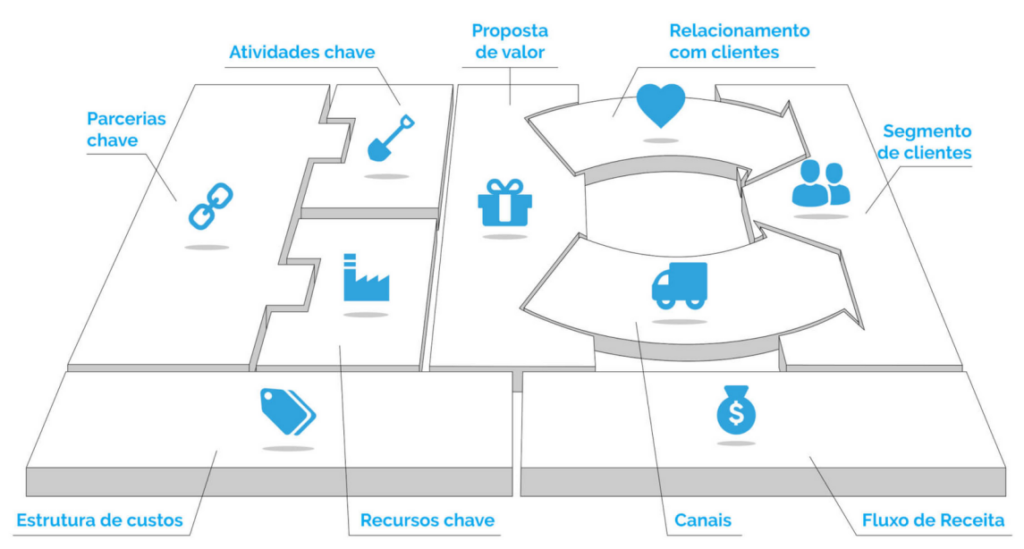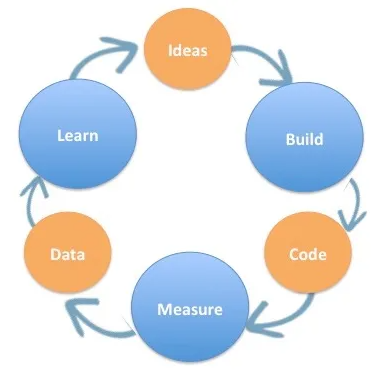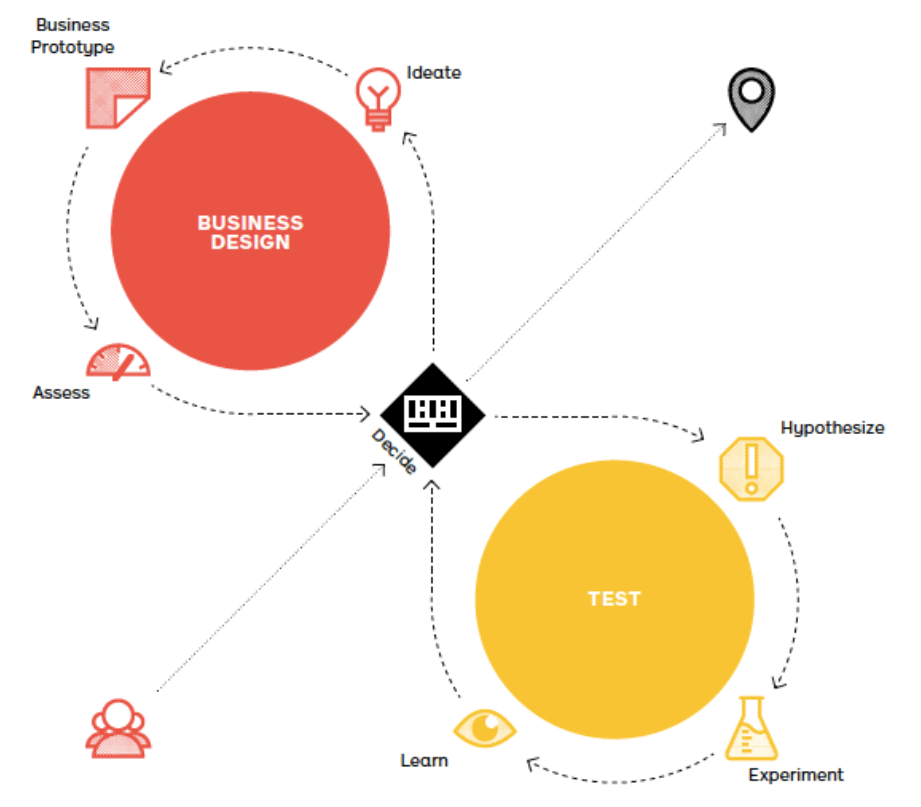Let’s build exceptional software solutions together!
Experience having a reliable partner to your IT challenges. Let’s talk about our unique approach to discover and deliver outstanding solutions.
How to Drive Innovation?
The first step is knowledge. Relying on the work of researchers who are at the forefront of developing innovation frameworks is essential to achieving satisfactory results. Since the 1980s, the area has been studied by theorists around the world, and real experiments have been conducted to validate such theories. Already in the book Innovation and Entrepreneurship (1985), by Peter Drucker, it was discussed the orientation that innovation should be developed through scientific thinking focused on empirical data, and not based on personal opinions or passions. The following year, Hirotaka Takeuchi and Ikujiru Nonaka released the article The New New Product Development Game, in which they advocated the development of complex products with multidisciplinary teams engaged in iterative experimentation. Approximately ten years later, in Discovery-Driven Planning (1995), Rita McGrath and Ian McMillan introduced the title’s concept, arguing that in new ventures it is more important to learn about assumptions than to make long-term plans. Soon after, through a multiple case study, Gary Lynn contributed to the article The Probe and Learn Process, saying that he identified that companies capable of innovating in a stagnant economic scenario were those that were using such a process – testing and learning – experimenting with initial and unfinished versions of the product and iterating in this process. However, it was only from the 2000s onwards, that experimentation practices for Discovery and Validation finally gained the attention of the public. They are among the most current in the area of innovation in digital products.Customer Development Process
In 2003, Steve Blank presented his newest framework for the technology market. Based on four steps, the Customer Development Process (CDP) aims to discover and validate if: you have identified a need that your potential customer actually has; you have built the right product to satisfy this need; you have tested the correct methods to convert this customer; and implemented the right features in development to meet the demand for your product. The CDM is still used today and serves so that businesses do not base the creation of their products on premises and/or assumptions. We can see these four steps more clearly below:- Customer Discovery: understanding potential customers and the needs you can satisfy;
- Customer Validation: validate if your product really satisfies the customer’s need;
- Company Creation: determine whether you will create this product;
- Company Building: grow your business to support your product.

Source: https://learn.marsdd.com/
Business Model Canvas
A few years later, Alex Osterwalder and Yves Pigneur created the Business Model Canvas (2004). According to them, a Business Model is a conceptual tool that contains a set of elements and their relationships and allows the expression of an organization’s moneymaking logic. It is a description of the value that a company offers to one or several customer segments. Moreover, it expresses the architecture of the company and its network of partners to create, market, and deliver that value and relationship capital to generate profitable and sustainable revenue streams. The Business Model Canvas, which allows the creation of a more complete business proposal, is important to identify hypotheses that need to be tested. For the theorist, it is not only the products and services of an organization that make it competitive in the market: the Business Model is also decisive.
Source: Book Business Model Canvas (2004).
The Lean Startup
Eric Ries revolutionized the market the following year in 2011 when he released the famous book The Lean Startup, in which he detailed the build-measure-learn cycle. The method proposed by the author aims to shorten product development cycles and quickly discover whether a Business Model is viable or not. In practice, the framework involves a cycle of hypothesis creation and testing, in which something small is built (MVP) for potential customers to test. Their reactions are documented by the team, to generate learning and drive new improved cycles. The Lean Startup idea is to continually improve the product’s offering so that you eventually deliver exactly what your customers want. Thus, the picture of savings becomes a reality, as resources are only used with data that justify them.
Source: https://tinytracker.co/blog/
Testing Business Ideas
Finally, in 2020, in the book Testing Business Ideas, Osterwalder continues his Business Model Canvas and proposes a new framework to innovate Business Models. It aims to minimize the importance of “building” (the Lean Startup) and make the relevance and meaning of “experimenting” clear. According to the author, “testing is the activity of reducing risks chasing ideas that sound good in theory. You test ideas by conducting quick experiments that allow you to learn and adapt.” In the framework in question, in the lower left corner are the entrepreneurs and in the upper right corner is the positive result of the business. To follow this path, decisions need to be made and Osterwalder proposes that they be carried out based on two cycles: in the first, by creating hypotheses for the Business Model Canvas and, in the second, by testing these hypotheses to learn. After the round of experiments, the Business Model Canvas must be revised, so that the cycles are repeated until you have data on which to base decisions. This means that through this method, it is possible to discover if the direction we imagine makes sense (Discovery) and validate if the chosen paths have evidence of success (Validation).
Source: Book Testing Business Ideas (2019).
Chasing True Innovation
Conducting such practices within the business is not an easy task. It is necessary to have at least one person who masters the frameworks and leads the team through the development and innovation process. At SoftDesign, we offer distinguished services that can support true innovation, as they are based precisely on the Customer Development Process, the Business Model Canvas, the Lean Startup, and the Testing of Business Ideas. We act from the idea or problem, carrying out the Product Conception of the solution; then we go on to Experimentation to validate the feasibility of this solution; and finally, we work on Development, from the quickest, which are the MVPs, up to the more robust solutions, evolving from data and user feedback, adding new features and a better user experience. Contact us! Our multidisciplinary professionals have the necessary skills to support the digital innovation journey of your business.This article was based on the Final Paper for the MBA in Digital Business (USP/ESALQ), by Karina Klein Hartmann, entitled The adoption of experimentation practices for discovery and validation of digital products in Brazil (Adoção de práticas de experimentação para descoberta e validação em produtos digitais no Brasil).
